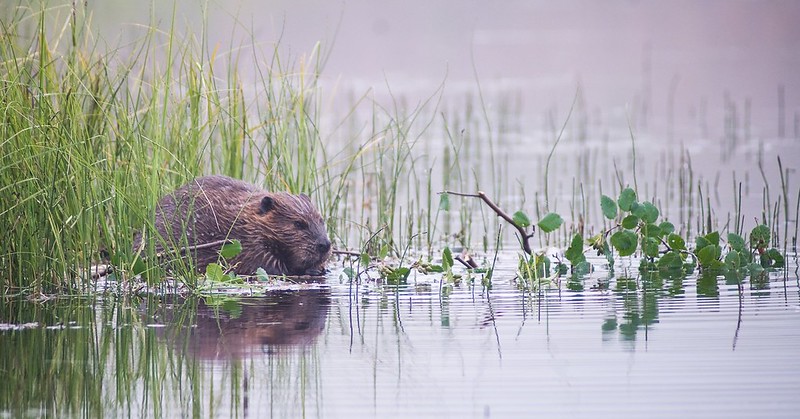
The humble beaver could hold the key to saving our water, according to new research that found how their dam building skills protect rivers threatened by climate change.
If rivers should come under pressure from drying up, beavers’ tendencies to build dams under such conditions will help sustain the water flow and quality.
The research, done on rivers in Colorado, found the animals’ wooden barriers raise water levels upstream. As it builds up the water is diverted into surrounding soils and secondary waterways—known collectively as riparian zones.
These act like filters, straining out excess nutrients and contaminants before water re-enters the main channel downstream.
Extreme weather events, such as rapid snowmelt and severe storms, impact water quality in major river systems. Droughts and floods are becoming more frequent, and the scientists have also found they are contributing to a resurgence of the American beaver in the US, and consequently an explosion of dam building.
“As we’re getting drier and warmer in the mountain watersheds in the American West, that should lead to water quality degradation,” said senior author Professor Scott Fendorf, of Stanford University, California. “Yet unbeknownst to us prior to this study, the outsized influence of beaver activity on water quality is a positive counter to climate change.”
The team chose to monitor a 40 kilometer stretch of East River, near Crested Butte in central Colorado. They reviewed data on water levels gathered hourly by sensors installed in the river and throughout the riparian area.
READ ALSO: Wild Bison Return to UK After Thousands of Years – And Are Ready to Tear S*!# Up
They also collected water samples, including from below the ground’s surface to monitor nutrient and contaminant levels.
The researchers compared water quality along a stretch during a historically dry year, to water quality the following year when water levels were unusually high.
They also compared these year long datasets to water quality during the nearly three-month period, starting in late July 2018, when the beaver dam blocked the river.
The study revealed the dams increased nitrate removal by nearly 50% by increasing the pressure of the water flow upstream 10 times over, which pushed more water out into the riparian areas.
This decrease in nitrates, which are absorbed and digested by soil microbes, helped increase oxygen content and quality for aquatic life.
Initially, lead author Dr. Christian Dewey at Oregon State whose mascot incidentally is a beaver, had set out to track seasonal changes in hydrology.
“Completely by luck, a beaver decided to build a dam at our study site,” Dewey said. “The construction of this beaver dam afforded us the opportunity to run a great natural experiment.”
RELATED: Beavers Saved From Euthanasia Transform and Replenish Rivers in the Utah Desert
The study is a reminder that as the future impacts of climate change are holistically assessed, feedback from changes in ecosystems must also be included.
“Beavers are countering water quality degradation and improving water quality by producing simulated hydrological extremes that dwarf what the climate is doing,” said Fendorf. “We would expect climate change to induce hydrological extremes and degradation of water quality during drought periods.”
“In this study, we’re seeing that would have indeed been true if it weren’t for this other ecological change taking place, which is the beavers, their proliferating dams, and their growing populations.”
The building of dams is an industrious instinct that stretches back millions of years. Their handiwork is responsible for the lush, fertile land they love.
SHARE This Story Over At Your Friends’ Dams On Social Media…



















